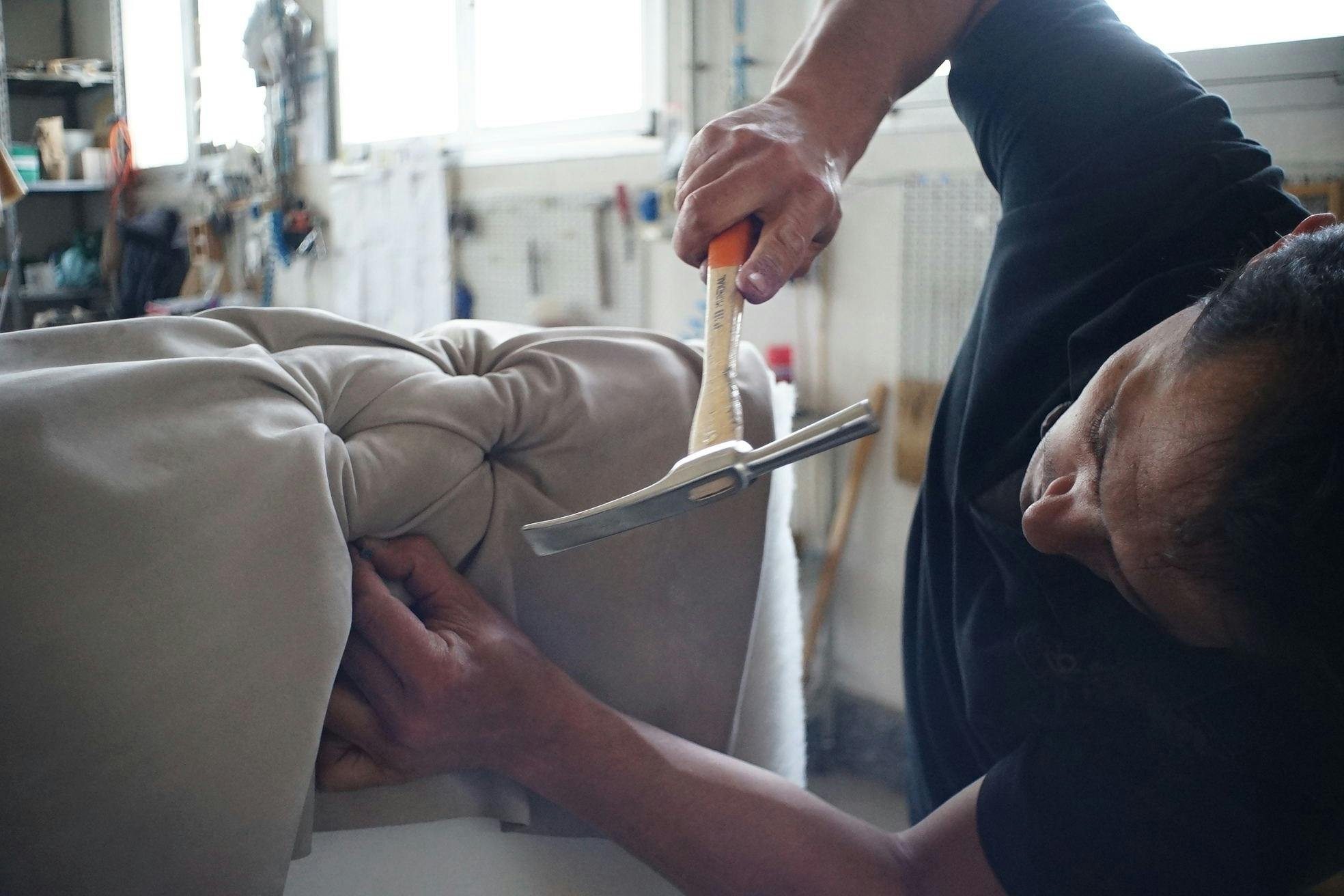The Science of Upholstery: Understanding Comfort and Ergonomics in Furniture Design
Upholstery is more than an art form—it’s a science that combines materials, design principles, and ergonomics to create furniture that supports the human body while providing comfort. This article delves into the technical aspects of upholstery, exploring how craftsmanship, material selection, and modern technology contribute to optimal comfort and functionality.
What Makes Upholstered Furniture Comfortable?
Comfort in furniture is subjective, varying based on personal preferences, body types, and intended usage. However, several universal factors contribute to comfort:
- Cushioning: The material and thickness of padding affect support and softness.
- Ergonomics: Furniture should align with the natural posture of the human body.
- Fabric: Breathability, texture, and durability of the covering material influence the overall experience.
The Role of Cushioning Materials
The cushioning layer in upholstered furniture is crucial for achieving the perfect balance between softness and support. Here’s a breakdown of common materials and their properties:
1. Foam
Foam is the most widely used padding material due to its versatility and cost-effectiveness. Types include:
- High-Density Foam: Offers firm support and longevity.
- Memory Foam: Contours to the body, providing personalized comfort.
- Open-Cell Foam: Allows for better airflow, enhancing breathability.
2. Natural Fillings
Eco-conscious consumers often prefer natural options, such as:
- Feathers and Down: Soft and luxurious but require regular fluffing.
- Horsehair: Durable and resilient, commonly used in high-end furniture.
- Wool: Moisture-wicking and hypoallergenic, ideal for sensitive users.
3. Hybrid Systems
Many manufacturers combine materials like foam and springs to optimize comfort and durability. Pocketed coils or latex layers provide additional support without sacrificing softness.
Ergonomics in Upholstery Design
Ergonomics focuses on designing furniture that aligns with the body’s natural curves, reducing strain and promoting well-being. Key principles include:
1. Lumbar Support
Proper lower back support is essential for seating, especially for prolonged use. Chairs and sofas should feature a slight curve in the backrest to follow the spine’s natural “S” shape.
2. Seat Depth and Height
The depth of the seat should allow the user’s knees to bend comfortably at a 90-degree angle while their feet rest flat on the ground. Adjustable-height chairs accommodate users of different sizes.
3. Armrests and Headrests
Supportive armrests reduce strain on the shoulders, while well-positioned headrests help maintain proper neck alignment.
4. Pressure Distribution
High-quality upholstery minimizes pressure points, particularly in areas like the hips and thighs. Memory foam and spring systems excel in this regard.
Fabric Selection: More Than Just Aesthetic Appeal
The fabric covering upholstered furniture significantly impacts both comfort and practicality. Consider the following aspects:
1. Breathability
Natural fibers like cotton, linen, and wool allow air circulation, making them ideal for warm climates. Synthetic fabrics may trap heat but are often treated for stain resistance.
2. Texture
Smooth fabrics like silk or velvet create a luxurious feel, while rougher materials like tweed add a rustic charm.
3. Durability
For high-traffic areas, opt for tightly woven fabrics or blends that resist wear and tear.
4. Maintenance
Choose fabrics with stain-resistant finishes or washable options for homes with children or pets.
The Science of Color and Patterns in Upholstery
Color and pattern choices in upholstery can influence not only a room’s aesthetics but also its atmosphere and mood. Here’s how:
- Warm Tones: Reds, oranges, and yellows evoke energy and warmth.
- Cool Tones: Blues and greens promote calmness and relaxation.
- Neutral Shades: Grays, beiges, and whites provide versatility and balance.
- Patterns: Stripes, florals, or geometric designs can create visual interest or draw attention to specific furniture pieces.
Technology in Upholstered Furniture
Modern advancements have transformed upholstery, integrating innovative features for enhanced comfort and functionality.
1. Temperature-Regulating Fabrics
Phase-change materials (PCMs) adapt to body heat, keeping users cool in summer and warm in winter.
2. Smart Sensors
High-tech chairs and sofas equipped with sensors can adjust firmness, measure posture, or even offer massage functions.
3. Sustainable Innovations
Recycled PET fabrics and biodegradable foams are paving the way for eco-friendly upholstery that doesn’t compromise on comfort.
Custom Upholstery for Specialized Needs
Custom upholstery ensures that furniture meets specific ergonomic and aesthetic requirements. Applications include:
- Medical Settings: Adjustable hospital chairs with antimicrobial fabrics and pressure-relieving cushions.
- Office Furniture: Ergonomic task chairs designed to support long hours of desk work.
- Inclusive Design: Upholstery tailored for individuals with disabilities, featuring easy-to-clean surfaces and extra padding.
How to Assess Upholstered Furniture for Comfort
When shopping for upholstered furniture, use these tips to ensure optimal comfort:
- Test the Seat: Sit for at least five minutes to evaluate cushioning and support.
- Examine the Backrest: Check for lumbar support and overall height.
- Inspect the Armrests: Ensure they’re at a comfortable height and width.
- Feel the Fabric: Run your hands over the fabric to gauge its texture and breathability.
Maintaining Comfort Over Time
Proper maintenance ensures that your upholstered furniture remains comfortable and visually appealing. Tips include:
- Fluff Cushions Regularly: Prevents flattening and uneven wear.
- Vacuum Upholstery: Removes dust and debris that can degrade fabric fibers.
- Rotate Cushions: Helps distribute wear evenly.
- Use Protective Covers: Shields against spills and stains, especially in busy households.
The Future of Upholstery Comfort
The future of upholstery lies at the intersection of science, sustainability, and personalization. Emerging trends include:
- AI-Driven Design: Algorithms that create ergonomically optimized furniture for individual users.
- Biomaterials: Living fabrics that adapt to environmental conditions.
- Virtual Customization: Augmented reality (AR) tools allowing customers to visualize and modify furniture designs in real-time.
Conclusion: Comfort Crafted Through Science
Upholstery is a blend of art and science, with every detail—from cushioning materials to ergonomic design—contributing to the overall experience. By understanding the principles of comfort, fabric selection, and modern technology, you can choose or create furniture that supports your lifestyle and enhances your well-being.
Whether you’re buying a new sofa, restoring a family heirloom, or exploring sustainable options, upholstery science offers endless possibilities for crafting comfort.



